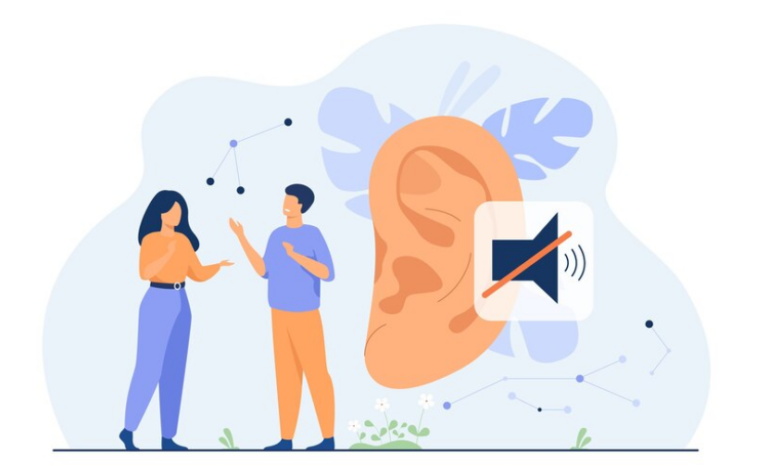Unveiling the Science Behind Addiction and Gaming Disorders

Are you ready to delve into the fascinating world of addiction and gaming disorders? Today, we’re going to peel back the layers and uncover the science behind these captivating phenomena. From the intricate workings of our brain chemistry to the role of genetics, this blog post will take you on an enlightening journey through the neural pathways that drive addictive behaviors. So grab a seat, buckle up, and get ready for some mind-blowing insights into addiction and gaming disorders!
What is addiction?
What is addiction? It’s a question that has puzzled scientists, psychologists, and individuals alike. At its core, addiction can be described as a compulsive dependence on a substance or behavior that brings temporary pleasure but often leads to negative consequences.
Addiction goes beyond just enjoying something; it involves an inability to control one’s actions and a constant craving for more. It hijacks the brain’s reward system, causing dopamine levels to surge in response to the substance or activity.
Think about it this way: imagine you feel an intense urge to check your phone every few minutes. You know you shouldn’t do it because you’re at work or spending time with loved ones, yet the pull is irresistible. That compulsion and lack of control are key aspects of addiction.
It’s important to note that addictions can take many forms – from substances like drugs and alcohol to behaviors such as gambling or gaming. The common thread is the disruption they cause in an individual’s life, affecting relationships, work performance, and overall well-being.
But why do some people become addicted while others don’t? And what happens in our brains when addiction takes hold? These questions bring us into the fascinating realm of neuroscience – where we’ll explore the anatomy of addiction in our next section!
The anatomy of addiction
The anatomy of addiction is a complex web of intertwined factors that play a role in the development and maintenance of addictive behaviors. It goes beyond simply having a strong willpower or moral character. Addiction impacts various parts of the brain, altering its structure and function.
One key component in the anatomy of addiction is the reward pathway, which involves several brain regions such as the prefrontal cortex, nucleus accumbens, and amygdala. When we engage in pleasurable activities like gaming or using drugs, these regions release chemicals called neurotransmitters.
Dopamine, known as the “feel-good” neurotransmitter, plays a central role in addiction. It reinforces our desire to repeat rewarding behaviors by creating feelings of pleasure and motivation. In individuals with addiction, this dopamine system becomes dysregulated, leading to an increased craving for substances or activities.
Another aspect of addiction’s anatomy involves opioids – natural pain-relieving chemicals produced by our bodies. Opioids contribute to feelings of euphoria and can be released during certain rewarding experiences. However, prolonged substance use can disrupt this system and lead to dependence.
Additionally, addiction isn’t solely influenced by environmental factors; genetics also play a significant role. Certain genetic variations can increase susceptibility to developing addictive disorders due to differences in how individuals metabolize substances or respond to rewards.
Understanding the intricate anatomy behind addiction helps us grasp why it’s not merely a matter of willpower but rather a complex interplay between biology and environment. By addressing these underlying mechanisms through evidence-based treatments tailored specifically for each individual’s needs, we have better chances at overcoming addictive behaviors.
The role of dopamine and opioids in addiction
The role of dopamine and opioids in addiction is a fascinating area of research that sheds light on the mechanisms underlying addictive behaviors. Dopamine, often referred to as the “feel-good” neurotransmitter, plays a crucial role in reward-based learning and reinforcement. When we engage in pleasurable activities such as eating delicious food or playing video games, dopamine is released in our brains, creating a sense of pleasure and motivation.
In the context of addiction, this natural reward system can become hijacked. The repeated use of addictive substances or engagement in addictive behaviors leads to an excessive release of dopamine. Over time, this flood of dopamine can desensitize the brain’s reward circuitry, making it less responsive to everyday pleasures.
Opioids also play a significant role in addiction. These powerful pain-relieving chemicals bind to opioid receptors throughout the brain and body to produce feelings of euphoria and analgesia. Opioid drugs like heroin and prescription painkillers mimic endogenous opioids produced by our bodies but at much higher levels.
The combination of increased dopamine levels from addictive substances or behaviors along with heightened opioid activity contributes to the intense cravings experienced by individuals struggling with addiction. This complex interplay between neurotransmitters creates a cycle where individuals seek out more substance or engage further in their addictive behavior to experience temporary relief from withdrawal symptoms or regain that sense of pleasure they have become accustomed to.
Understanding these neural mechanisms provides valuable insights into how addiction takes hold and why it can be so difficult for individuals to break free from its grip.
Genetics and addiction
Genetics and addiction play a significant role in the development of addictive behaviors. Our genetic makeup can influence our susceptibility to addiction and determine how we respond to certain substances or activities. While genetics alone cannot fully explain addiction, they do contribute to its complexity.
Research has shown that certain genes can increase an individual’s vulnerability to developing an addiction. These genes are involved in various processes within the brain, such as regulating neurotransmitters like dopamine, which plays a key role in reward and pleasure pathways.
Additionally, studies have found that individuals with a family history of addiction are more likely to develop addictive behaviors themselves. This suggests that there is an inherited predisposition towards addiction.
However, it is important to note that genetics does not guarantee the development of addiction. Environmental factors also play a crucial role in determining whether someone will develop addictive behaviors or not.
Understanding the genetic component of addiction can help inform prevention strategies and personalized treatment approaches. By identifying specific genetic markers associated with increased risk for substance abuse or gaming disorders, healthcare professionals can better tailor interventions for at-risk individuals.
In conclusion (not concluding), while genetics may predispose some individuals to addictive behaviors, it is only one piece of the puzzle when it comes to understanding addiction as a whole. A comprehensive approach that considers both genetic and environmental factors is crucial in addressing this complex issue.
The neuroscience of addiction and gaming disorders
The neuroscience of addiction and gaming disorders delves into the intricate workings of the brain when it comes to these compulsive behaviors. It’s fascinating to see how certain neural pathways are activated and reinforced, leading individuals down a path of dependency.
At the core of addiction lies dopamine, a neurotransmitter that plays a crucial role in pleasure and reward. When we engage in activities like gaming, our brains release dopamine, creating feelings of enjoyment. Over time, this can lead to tolerance, requiring more intense or frequent stimulation to achieve the same level of satisfaction.
Additionally, opioids also come into play during addictive behaviors. These endogenous chemicals bind to receptors in the brain associated with pain relief and pleasure. They contribute to reinforcing addictive patterns by intensifying feelings of euphoria experienced during gaming.
Genetics also play a significant role in addiction susceptibility. Some individuals may have genetic variations that make them more prone to developing addictive behaviors. Understanding these genetic factors can help tailor treatment approaches for those struggling with addiction or gaming disorders.
Through advanced neuroimaging techniques such as functional magnetic resonance imaging (fMRI), researchers have been able to identify specific regions in the brain that are involved in addiction processes. These include areas related to decision-making, impulsivity control, and reward processing.
Treatment for addiction and gaming disorders often involves a combination of therapy interventions aimed at addressing underlying psychological issues while retraining neural pathways associated with cravings and rewards. Cognitive-behavioral therapy (CBT) has shown promising results in helping individuals break free from addictive cycles by identifying triggers and developing healthier coping mechanisms.
Treatment for addiction and gaming disorders
Finding effective treatment for addiction and gaming disorders is crucial in helping individuals regain control of their lives. There are various approaches that can be taken, depending on the specific needs of each individual.
One common form of treatment is behavioral therapy, toto macau hari ini which aims to modify problematic behaviors and replace them with healthier alternatives. This may involve identifying triggers and developing coping strategies to manage cravings or urges to engage in addictive behaviors.
Cognitive-behavioral therapy (CBT) is another widely used approach that helps individuals understand the thoughts and emotions driving their addictive behavior. By challenging negative thought patterns and developing new ways of thinking, individuals can learn how to change their behavior.
In some cases, medication may also be prescribed as part of a comprehensive treatment plan. Medications such as naltrexone or bupropion can help reduce cravings or alleviate symptoms associated with withdrawal from certain substances.
Support groups, such as Alcoholics Anonymous (AA) or Gamblers Anonymous (GA), provide a valuable source of support from others who have gone through similar experiences. These groups offer a safe space where individuals can share their struggles, receive encouragement, and learn from one another’s successes and setbacks.
It’s important to note that not all treatments work equally well for everyone. Tailoring the approach based on an individual’s unique circumstances is key to achieving successful outcomes.
With the right combination of therapies, support systems, and personalized care plans, individuals struggling with addiction or gaming disorders have hope for recovery. Seeking professional help is often the first step towards reclaiming control over one’s life and finding lasting healing.



